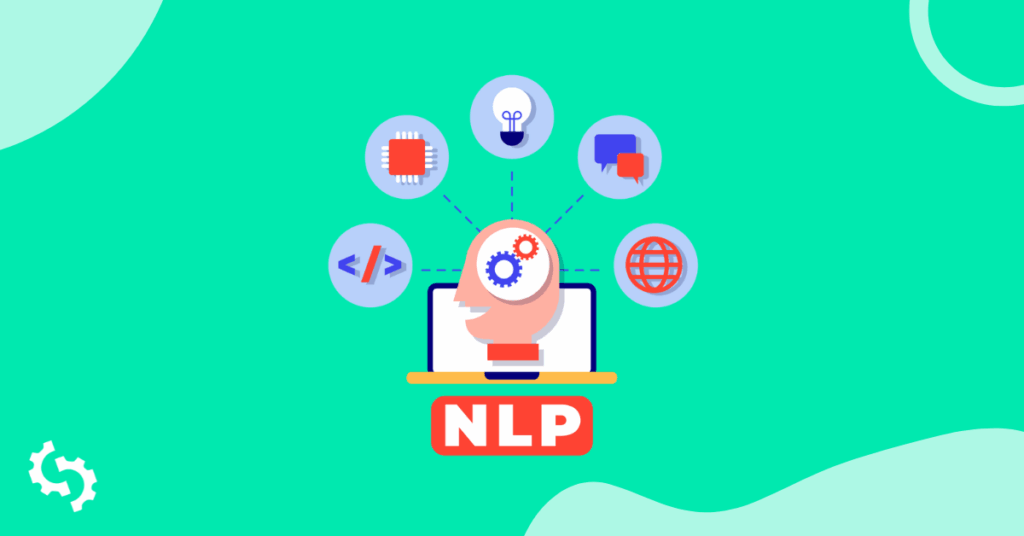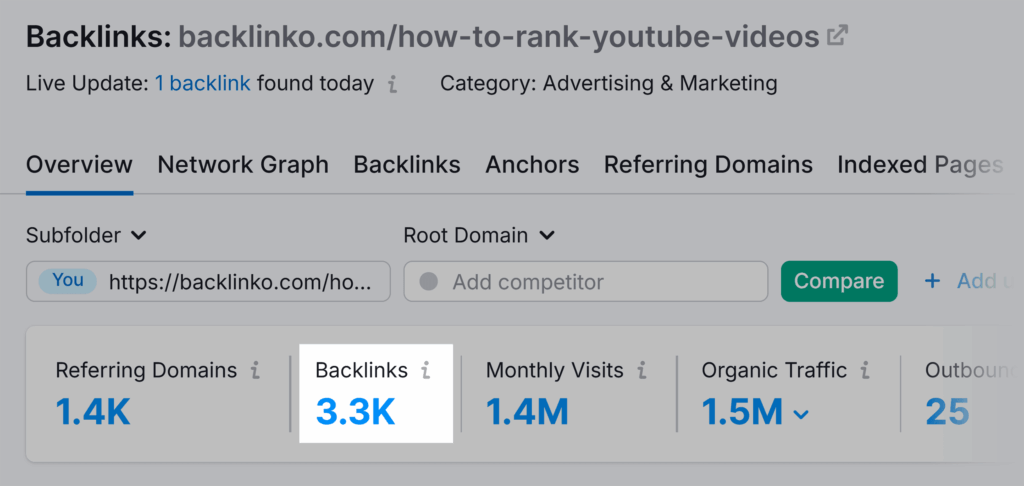Enterprise SEO is a comprehensive search engine optimization technique. It is tailored specifically for large organizations with extensive websites. Enterprise SEO attempts to tackle the specific challenges and opportunities that accompany websites that can consist of thousands, if not millions, of pages.
It allows websites that participate in this process to not only optimize their web properties but also improve their position in search results. It allows a business to take advantage of SEO content strategy, on-page optimization, off-page optimization, and all of the analytics that SEO offers in creating a complete picture in the demanding environment of today’s competitive online world.
This comprehensive guide can make it easier to conduct enterprise SEO for your company.
Table of Contents
Why is SEO Important?
In this digital age, a large organization’s online presence is critical. Search Engine Optimization (SEO) is essential to that online presence. Here’s why SEO is paramount:
Increases Visibility and Organic Traffic
SEO improves your visibility on search engine results pages (SERPs); more visibility means more organic traffic to your website. This means more exposure, brand awareness, and a greater chance of attracting new customers. Therefore, for large organizations, more visibility could mean business growth with increased revenue.
Improves User Experience
An optimized website improves the overall user experience. SEO means improving your site speed, mobile usability, and intuitive navigation, all of which reflect positively on the user’s ability to use a website. If customers are getting what they want and are satisfied, the chances of keeping customers engaged for longer to consume the content and gain customers increase.
Provides Long-Term Results
SEO results last longer than paid traffic. While it may take a bit of time for an SEO strategy to kick in, the effects of SEO can last years. SEO provides your business with a tangible benefit if you invest in it consistently and work on implementing an SEO strategy for the long term. Eventually, this will lead to consistent organic visibility and traffic.
Gives You a Competitive Edge
In a competitive environment, SEO gives you an advantage over the competition. You can increase visibility and traffic through SEO as long as you are implementing an SEO strategy for the long term. If you are optimizing your pages and are at the forefront of SEO, you will be able to outrank them in search results and attract customers from competitors.
Cost-Effective Marketing
Pound-for-pound, SEO can be one of the most effective marketing options available to marketers today. As previously hinted, SEO’s target market are users actively searching for ‘your’ products or services. Compared to probably all other forms of marketing, SEO can give you a better return on investment, mainly because it is more effective and does not have an ongoing cost (like paid ads) to keep on driving traffic.
The Best Strategies for Enterprise SEO
Here are some of the most important aspects of enterprise SEO that you will have to address.
Technical SEO
Technical SEO refers to optimizing a website’s infrastructure. It includes tasks like fixing technical issues like broken links and duplicate content.
Site structure and navigation
It’s important to establish a logical site structure. A logically structured website will assist search engines with interpreting your content. It also makes it easier for users to still manage to find what they need on your site. Use a logical hierarchy by using categories with subcategories to improve both crawlability and accessibility for human visitors.
Indexing and Crawling
Make sure search engines index your important pages. You can submit a sitemap in the Google Search Console. Submitting a sitemap will help search engines quickly find and index your pages. You can use robots.txt in order to limit what pages you want search engines to crawl, but also remember to avoid stopping it from crawling important pages.
Optimize for Mobile Devices
Make sure your website is optimized for mobile phones. More people now use their mobile phones to search the Internet than they do on desktops. Make sure your website loads quickly and looks good on any screen. Use responsive design to adapt the content to the size of the device. Google ranks mobile-friendly websites higher than sites that are not mobile-friendly or optimized.

Optimize Site Speed
Site speed is one of the important ranking factors for SEO and one of the important things in terms of visitor experience. The faster your website is, the greater the chances of ranking higher on search page results and increasing website performance and time on page.
On average, images make up 21% of each web page. If you want a faster site, consider compressing your images, using browser caching, and minimizing the use of JavaScript and CSS files. Tools like Google PageSpeed Insights can help you identify the issues on your pages to improve your time on load.
Canonical Tags
Canonical tags help you avoid the problems of duplicate content. Further, they tell search engines which URLs are the primary version of the page. Canonical tags help to consolidate link equity and help prevent your website from being penalized for duplicate content.
Content Strategy
Content strategy involves planning, creating, and managing content to meet audience needs. It ensures that content is relevant, valuable, and optimized for search engines to drive traffic and engagement.
Keyword Research at Scale
Finding high-value keywords that will capture your audience is very important for large websites. Trying to find these high-value keywords will require SEMrush or Ahrefs. Doing this keyword research will help drive relevant traffic to your website.

Content Creation and Optimization
Create valuable content to serve your audience. Writing quality articles, blogs, and guides helps. Optimizing each content piece for the targeted keyword (using fresh, engaging headlines, meta descriptions, and images) benefits search ranking and user engagement.
Periodic Updates and Audits
Update your content on a routine basis to keep your content relevant. Removing content that is stale, adding new information to existing content, and following through with conducting content audits will help identify gaps and opportunities to better effect. This will help ensure the site stays fresh and collectively has value to users.
Evergreen Content
Evergreen content is essential for long-term SEO effectiveness, and evergreen content is not tied to time, always worth its weight in gold to a reader. Evergreen content generates consistent traffic and natural, quality backlinks. Emphasis on topical and guide content that you will do once will mean your enterprise will build authority in the industry.
On-Page SEO
On-page SEO optimizes individual web pages to improve their search engine rankings. This includes optimizing content, HTML tags (like title tags and meta descriptions), and internal links.
Title Tags and Meta Descriptions
Both title tags and meta descriptions are important. Title tags tell search engines what your web page content is about. Make them short and include your primary keywords. Meta descriptions are typically under your title in search results. Create the best meta descriptions so that people will click on the link. Your title tags and meta descriptions should be unique for each web page.
Internal Linking
Internal linking connects your web pages. It allows users to navigate your website while also helping them find related content. Make sure to use relevant anchor text for your links. This helps the search engines understand the content of the linked page. Internal linking helps search engines understand your website and helps distribute page authority across your web pages.
Header Tags
Header tags (H1, H2, H3, etc.) provide structure to your content. You should reserve the H1 header for your page title and use H2 and H3 header tags for the subheaders in your content. Header tags also assist search engines with understanding the arrangement of your content, which is helpful to you for SEO as well as for readability.

Image Optimization
Images can help provide the best user experience possible. By optimizing your images with descriptive file names and alt text, you allow search engines to also understand what the image is about. Compression is another necessary function for image optimization, which reduces the file size of the image late in the lifecycle of your images.
Properly compressing images before adding them to your page will allow your page to load faster, while fast-loading pages perform well in search engine optimization formality.
Schema Markup
Schema markup is a type of microdata. It helps search engines understand the content of your pages. Adding schema markup can improve your search result listings. This can lead to higher click-through rates. Common types include reviews, events, and product information.
Off-Page SEO
Off-page SEO involves activities outside your website to improve its search engine rankings. This includes building backlinks, brand mentions, social media engagement, and influencer marketing.
Building Backlinks
Building backlinks is important for off-site SEO. Backlink building is the process of getting links from other websites back to your own. However, when you can build backlinks from high-quality or reputable sites, it can also enhance your site’s overall authority. Backlinks that are established from reputable sites can show search engines that your content is valuable and boasts domain trustworthiness.
Brand Mentions and Public Relations
Getting your brand mentioned in the media or on a different site is great for SEO. There doesn’t need to be a link back to your website. It is simply good exposure to help build your online presence. You can then leverage public relations tactics or strategies to have your brand mentioned in a news article or blog to further enhance your credibility.
Engagement through Social Media
Social media is another essential part of off-page SEO. Interacting with your audience on social media channels like Facebook, Twitter, and LinkedIn can create traffic to your site. When you share your content on social media, it’s reaching a wider audience. Social factors, like likes and shares, should impact search ranking indirectly.
Guest Blogging/Contributing
Guest blogging is when you write content for another website to contribute to and reach an entirely different audience. Everyone is familiar with Google and backlinks, and guest blogging is a way to reach new audiences while getting backlinks from reputable websites.

Look for websites that are reputable and industry related—you can write for one every week or every two weeks. You can often include links to your site in your author bio or in the story itself. Doing guest blogs can improve authority for your site and create more traffic.
The Importance of Data
Comprehending metrics such as organic traffic, bounce rates, and conversion rates is an essential part of enterprise SEO. Tools such as Google Analytics and enterprise-grade SEO tools provide an array of reports and tracking information that can be analyzed to identify trends. Analytics allows for the compilation of relevant data to make evidence-based decisions and optimize your approach.
Data helps with competitor analysis as well. By analyzing competitor performance, you can highlight gaps and opportunities in your own SEO strategy. You can also analyze the performance of your keywords and content through analytics, which will help ensure that your website reflects user search intent.
By analyzing data regularly, you can ensure SEO strategies remain up to date with search engine algorithms. You’ll be able to make changes before the algorithm penalizes your entire strategy, instead of reacting to a decline in performance. Data and analytics allow enterprises to implement focused, successful, and scalable SEO strategies. They drive sustained organic growth and long-lasting competitiveness and sustainability in the marketplace.
Should You Implement Enterprise SEO Retrospectively?
Enterprise SEO should not just focus on your latest content. Extending it to your published works can also have many benefits.
Consistency and Uniformity
Retrospective SEO can bring uniformity across your website. In the process of making sure that all pages follow best practices, a consistent experience is created for users and a better website structure is built.
Improved Performance
Older web pages can often be improved with areas that usually improve search performance. When optimizing historical content, it can serve to increase visibility of that content and improve engagement.
Enhanced User Experience
If you are updating older content, it is easy to update and correct the data within the content as well as any errors. This creates a better experience for users and allows them to spend more time engaging with the site.
Alignment with Current SEO Best Practices
Search engine algorithms evolve, and SEO techniques change over time. Retrospective optimization ensures that your content remains aligned with the latest SEO guidelines. With different SEO practices being
Tools for Enterprise SEO
These tools are essential for conducting effective enterprise SEO campaigns.
SEMrush
SEMrush is an all-in-one SEO tool. It offers keyword research, competitor analysis, and site audit capabilities. It helps you identify high-performing keywords and analyze your competitors’ strategies. SEMrush also provides insights into backlink opportunities and tracks keyword rankings over time.
Ahrefs
Ahrefs specializes in backlink analysis, keyword research, and rank tracking. It helps you understand your backlink profile. Ahrefs makes it easier to discover new linking opportunities and monitor your site’s performance in search results. Ahrefs’ content explorer feature also assists in finding popular topics and content ideas to drive traffic.
Moz Pro
Moz Pro offers tools for keyword tracking, site audits, and on-page optimization. It helps you improve your site’s SEO by identifying technical issues. It makes it easier to track keyword rankings. You can use this tool to enhance on-page elements like title tags and meta descriptions. Moz Pro also provides insights into domain authority and competitor metrics.
Screaming Frog SEO Spider
Screaming Frog SEO Spider is a website crawling tool that helps you audit and analyze your site’s technical SEO. It identifies broken links, analyzes titles, and provides insights into site architecture. This tool is useful for identifying and fixing technical issues that can impact your site’s search engine performance.
Enterprise SEO is essential for large organizations to improve visibility and drive organic traffic. Investing in it ensures your website stays relevant and authoritative in the ever-evolving digital landscape.
For more guides like this, visit our website.
FAQs
- How does enterprise SEO differ from regular SEO?
Enterprise SEO focuses on optimizing large-scale websites with thousands or millions of pages. It requires advanced tools, cross-department collaboration, and strategies tailored to manage complex site structures. Regular SEO typically addresses smaller websites with simpler requirements.
- What are the challenges of implementing enterprise SEO?
Enterprise SEO involves challenges like managing large amounts of data, ensuring consistent optimization across all pages, and coordinating efforts across multiple teams. Technical issues, duplicate content, and adapting to frequent algorithm changes also add complexity.
- Can small businesses benefit from enterprise SEO strategies?
Some enterprise SEO techniques, like technical optimization and content organization, can benefit small businesses. However, enterprise SEO tools and strategies are designed for larger operations, so small businesses may not need the full scale of these methods.



















